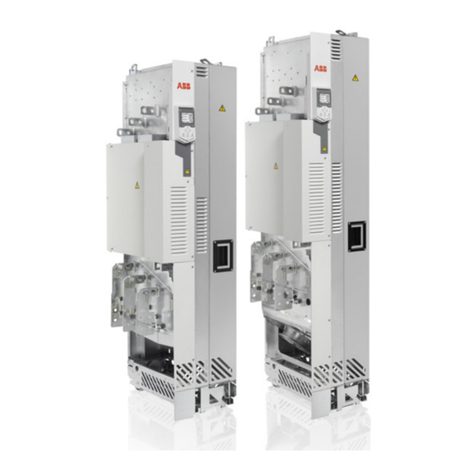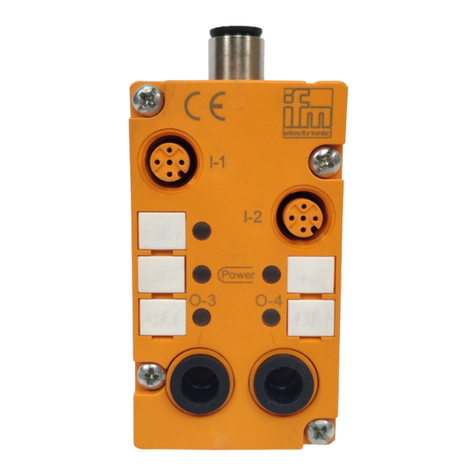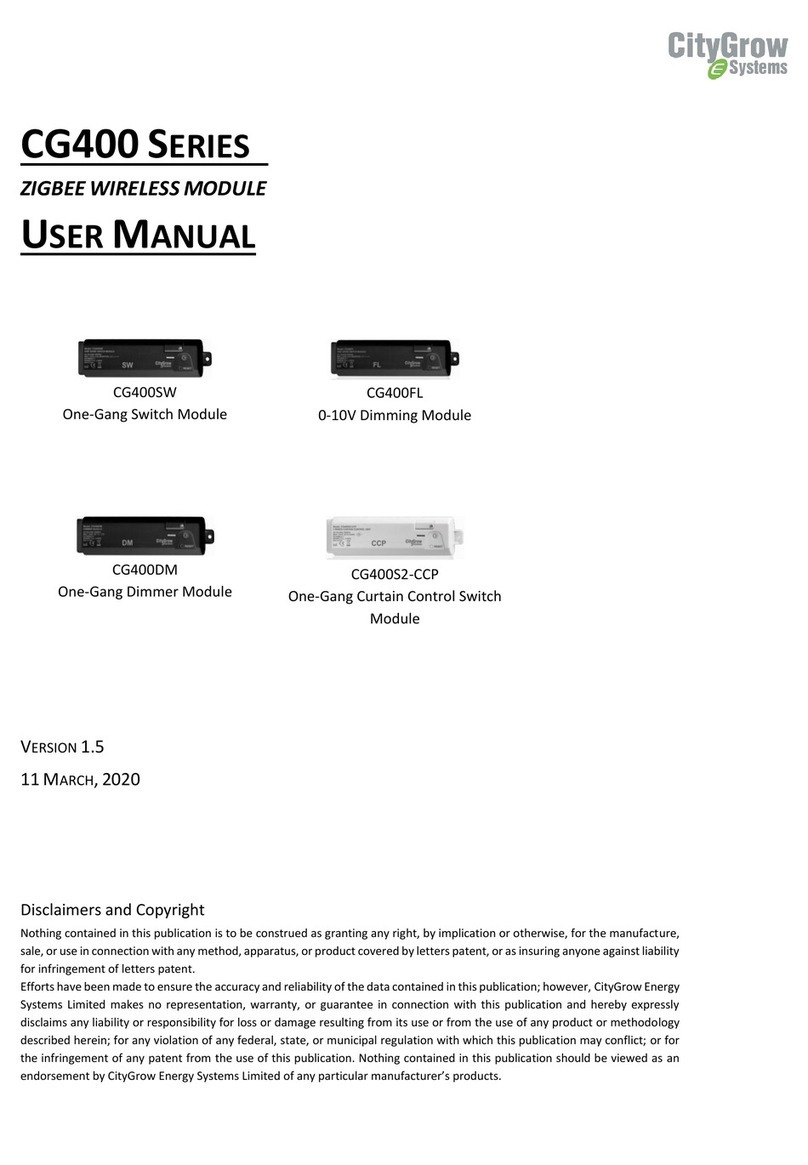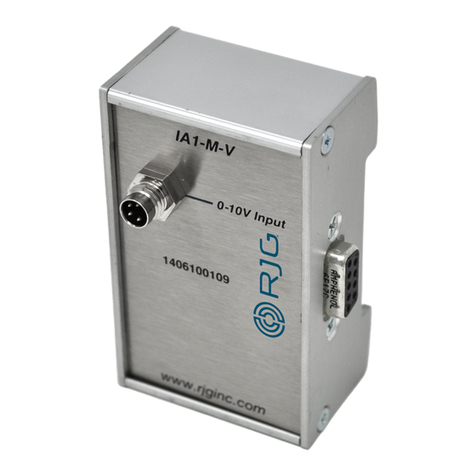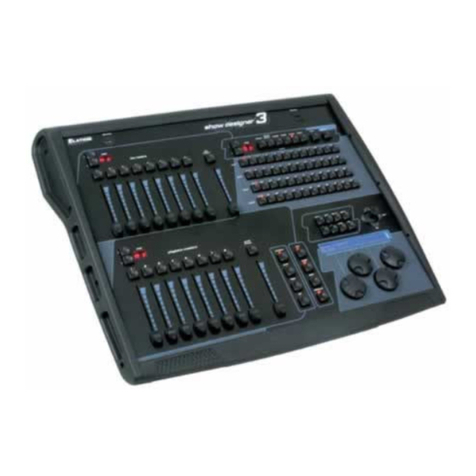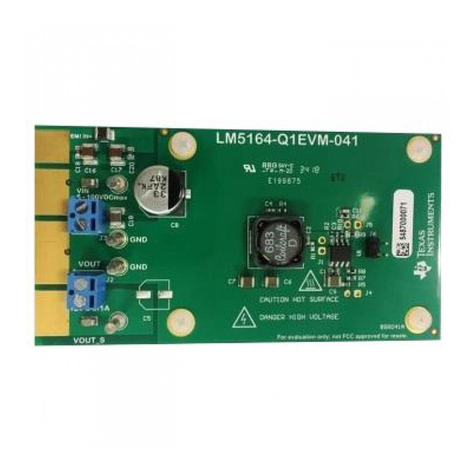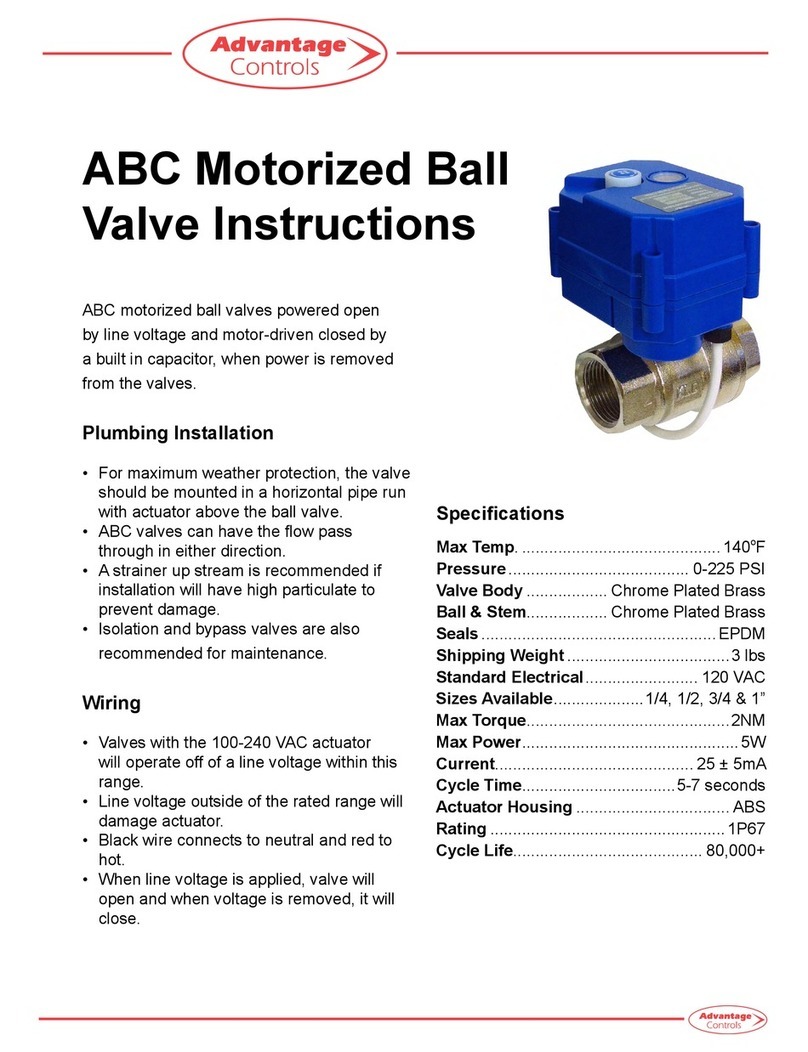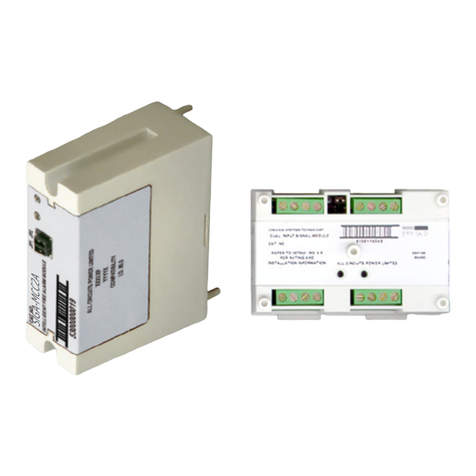Advanced Solar Photonics ASP-390M Mounting instructions

This document applies to the following PV Modules:
ASP-390M, ASP-395M, ASP-400M, ASP-405M, ASP-410M
Version Date: July 2, 2012
photovoltaikforum.com

Page 2of 13
Advanced Solar Photonics | 400 Rinehart Road | Lake Mary, Florida 32746
www.AdvancedSolarPhotonics.com | info@AdvancedSolarPhotonics.com
1.0 Introduction
Thank you for purchasing ASP Photovoltaic (PV) modules.
The modules you have chosen are highly efficient, use unique proprietary technology, are extremely rugged and
are designed to provide the longest life span of any photovoltaic module in the industry.
Artificially concentrated sunlight shall not be directed on the module or panel.
This manual provides safety and installation instructions for ASP Photovoltaic modules.
1.1 Disclaimer of Liability
The installation techniques, handling and use of this product are beyond company control. Therefore, ASP
does not assume responsibility for loss, damage or expense resulting from improper installation, handling or
use.
1.2 Limited Warranty
Module Limited warranties are described in the ASP warranty certificates.
ASP module warranty describes as below:
Free from defect in materials and workmanship for 5 years
90% of minimum warranty power output for 10 years
80% of minimum warranty power output for 25 years
2.0 Safety Precautions
Before installing this module, read all safety instructions in this manual.
Under normal conditions, a photovoltaic module is likely to experience conditions that produce more current
and/or voltage than reported at standard test conditions. Accordingly, the values of Isc and Voc marked on this
module should be multiplied by a factor of 1.25 when determining component voltage ratings, conductor
ampacities, fuse sizes, and size of controls connected to the PV output.
Refer to section 690.8 of the National Electrical Code for an additional multiplying factor of 125 percent (80
percent derating) which may be applicable.
The module or panel should be installed in accordance with the latest National Electrical Code (USA), Canadian
Electrical Code (Canada) or applicable national/international electric standards for the installation country.
The modules are class C fire rated and evaluated at 50lb/ft2 as maximum load.
Warning!
During sunlight hours even at low light levels, there is a risk of shock. This hazard increases when multiple
modules are connected together to provide higher system voltage or current levels. To reduce the risk of
electrical shock or burns, modules may be covered with an opaque material during installation to avoid shock
or burns. Do not touch live terminals with bare hands. Dangerous voltages may also be present at night from
connections to batteries and feedback from inverters or other parts of the system.
Cover all modules in the PV array with an opaque cloth or material before making or breaking electrical
connections.
All installations must be performed in compliance with all applicable regional and local codes.
There are no user serviceable parts within the module. Do not attempt to repair any part of the module.
Installation should be performed only by authorized personnel.
Remove all metallic jewelry prior to installing this product to reduce the chance of accidental exposure to
live circuits.
photovoltaikforum.com

Page 3of 13
Advanced Solar Photonics | 400 Rinehart Road | Lake Mary, Florida 32746
www.AdvancedSolarPhotonics.com | info@AdvancedSolarPhotonics.com
Use insulated tools to reduce your risk of electric shock.
Use wear protective equipment adequate to use in low voltage DC installations
Do not stand on, drop, scratch or allow objects to fall on modules.
If the front glass is broken, or the back sheet is torn, contact with any module surface or module frame
can cause electric shock.
Do not install or handle the modules when they are wet or during periods of high wind.
Artificially concentrated sunlight shall not be directed on the module or panel.
Do not expose backside of the module to sunlight.
In order to prevent water from entering the junction box, which could present a safety hazard, modules
should not be mounted such that the front glass faces downward (e.g. on a tracking structure that
positions the modules with the junction box facing skyward during sleep mode.)
Contact your module supplier if maintenance is necessary.
Save these instructions!
3.0 Procedure for Installation
i. ASP modules should be installed by a minimum of two qualified personnel. The system involves electricity,
can be dangerous if the operators are not familiar with the appropriate safety procedures.
ii. ASP PV modules can be mounted by various methods, using the six mounting holes located on the
module frame or may also be mounted using mounting clips on the channels within the recommended
area located on the module frame. (please refer to Figure 1 and 6)
iii. Secure the module using the six mounting holes provided using stainless steel bolts, nuts and spring and
pan washers for long-term security.
iv. Put the ASP PV modules on the channels, using the bolts, nut and washers then, tighten to 9.5N.m to
10N.m., or 7.00 to7.50 foot pounds, on the bolt and nut with proper tools as described in Figure.1.
Installing Modules
Figure 1 - Basic Mounting Structure
25
photovoltaikforum.com

Page 4of 13
Advanced Solar Photonics | 400 Rinehart Road | Lake Mary, Florida 32746
www.AdvancedSolarPhotonics.com | info@AdvancedSolarPhotonics.com
Roof Mounting
Clearance between the module frame and the mounting surface is required to prevent the junction box
from touching the surface, and to circulate cool air around the back/underneath of the module. If the
modules are to be installed on the roof or wall of a building, a stand-off or rack mounting method is
recommended.
Stand-Off/Rack-Mounting Method: The modules are supported parallel to the surface of the roof.
Clearance between the module frames and surface of the roof is required to prevent wiring damage and
to allow air to circulate behind the module. We recommend you install the modules with a 3” to 6” air
gap.
Mounting hardware size and torque
Size
Threads Per Inch
Assembly Torque (in-lb)
Max.
Min.
¼ – 20
85
60
5/16 – 18
150
110
#10 - 32
35
35
CAUTION
Never leave a module unsupported or unsecured. If a module should fall, the glass
could break. A module with broken glass cannot be repaired and must not be used.
4.0 Electrical Characteristics
The module electrical ratings are measured at Standard Test conditions (STC) of 1000 W/㎡ irradiance with air
mass 1.5G spectrum and a cell temperature of 25℃. Electrical characteristics for specific ASP PV modules are on
the product label and product data sheet.
A photovoltaic module may produce more current and/or voltage than reported at STC. As we have mentioned
previously, sunny, cool weather and reflection from snow or water can increase current and power output.
Therefore, the values of Isc and Voc marked on the module should be multiplied by using NEC standards when
determining component voltage ratings, conductor amperage, fuse sizes, and size of controls connected to PV
output.
photovoltaikforum.com

Page 5of 13
Advanced Solar Photonics | 400 Rinehart Road | Lake Mary, Florida 32746
www.AdvancedSolarPhotonics.com | info@AdvancedSolarPhotonics.com
Model
Max.
System
Voltage
(V dc)
Max.
Power
(Wp)
Max.
Power
Voltage
(Vmp)
Max.
Power
Current
(Imp)
Open
Circuit
Voltage
(Voc)
Short
Circuit
Current
(Isc)
Dimensions
(in/mm)
Max.
Series
Fuse
(A)
Weight
(lb/kg)
ASP-390M
UL–
600V
IEC–
1000V
390
49.38
7.92
59.62
8.42
77.17/1960(L)
51.50/1308(W)
1.57/40(T)
15
78.3 lb
35.5 kg
ASP-395M
395
49.53
7.98
59.71
8.49
ASP-400M
400
49.80
8.04
60.00
8.56
ASP-405M
405
50.06
8.10
60.38
8.66
ASP-410M
410
50.32
8.15
61.06
8.77
Table.1 Electrical Specifications
※ The electrical characteristics are within ±10% of the indicated values of ISC, VOC and Pmax under standard
test conditions (irradiance of 1000W/㎡. AM 1.5 spectrum and a cell temperature of 25℃)
5.0 Electrical Connections
Modules may be connected in series and/or parallel to achieve the desired electrical output as long as certain
conditions are met. Please use only the same type of module in a combined source circuit.
5.1 General Wiring
ASP recommends that all wiring be double insulated with a minimum rating of 90℃. All wiring should use
flexible copper (Cu) conductors. The minimum size should be determined by the applicable codes. We
recommend a size not less than 12AWG.
Details for wiring in accordance with the NEC, and that the grounding method of the frame of arrays shall
comply with the NEC, article 250.
Junction Box information is as below;
Model
Manufacturer
Imax
Vmax
Temperature
Assembly
Smartbox0925(5S4)
QC Solar
30 A
600 VDC
- 40 ~ 105 ℃
Cable
QC Cable
QC Solar
Corporation
25A
600 VDC
- 40 ~ 90 ℃
Connector
PV-KST4/6II
Multi-Contact AG
Basel
20 A
600 VDC
- 40 ~ 105 ℃
5.2 Module to Module Interconnection
ASP PV modules are designed to be readily interconnected. Each PV modules has two cables, one has a
positive (+) terminal and the other has a negative terminal, which are terminated inside the junction box.
Modules are interconnected by inserting the positive connector from one module into the negative connector
photovoltaikforum.com

Page 6of 13
Advanced Solar Photonics | 400 Rinehart Road | Lake Mary, Florida 32746
www.AdvancedSolarPhotonics.com | info@AdvancedSolarPhotonics.com
of the next module in the array string. The mated connector pair is then securely attached to the inside flange
of the module frame to protect them from damage (as shown in Figure 2).
If the modules are not provided with these connectors, please contact our representatives for detailed
instructions.
Connectors
Currently, ASP is using MC4 locking type connectors.
End Mount (Portrait)
Side Mount (Landscape)
Figure 2 - Module Orientation
photovoltaikforum.com

Page 7of 13
Advanced Solar Photonics | 400 Rinehart Road | Lake Mary, Florida 32746
www.AdvancedSolarPhotonics.com | info@AdvancedSolarPhotonics.com
5.3 Equipment Grounding
Please refer to the applicable regional and local codes on grounding PV arrays and mounting frames for
specific requirements.
We recommend you attach all module frames to an earth ground.
Attach a separate ground wire to one of the holes marked ‘ ’ on the module frame with a cable
lug, a bolt, a star washer, and nut.
Figure 3 – Basic Grounding Structure
Grounding Hardware
size & material
Remarks
Lay-in Ground Lug
Tip Platted Copper with stainless
steel set screw UL lay-in ground lug
BURNDY CL50-1TN, ILSCO GBL-4DBT
Outdoors Use
Hex Cap Screw
Stainless Steel(STS304)
Copper wire
#10-14 AWG
Star washer
Stainless Steel (STS304)
Hex Nut
Stainless(STS304)
Grounding Hardware Size & Materials
5.4 Module Grounding
Insert STS Bolt #10-32 into frame grounding hole with associated hardware as shown in Figure 3;
or
Use solar approved grounding lugs expressly for this purpose.
photovoltaikforum.com

Page 8of 13
Advanced Solar Photonics | 400 Rinehart Road | Lake Mary, Florida 32746
www.AdvancedSolarPhotonics.com | info@AdvancedSolarPhotonics.com
Figure 4 - Cell & Diode Circuit Diagram
Figure 5 - Simplified PV System Diagram
5.6 Series Connection
The modules may be combined in series to produce the desired current output. The maximum Vmax to be
connected in series is recommended up to 480V. Every series string or module must be fused prior to
combining with other strings. The maximum fuse size allowable is 15A. Bypass diodes are factory installed in
the modules. Please refer to the applicable local and regional codes as well as the inverter requirements for
additional fusing and limitations on the maximum number of modules in series.
photovoltaikforum.com

Page 9of 13
Advanced Solar Photonics | 400 Rinehart Road | Lake Mary, Florida 32746
www.AdvancedSolarPhotonics.com | info@AdvancedSolarPhotonics.com
6.0 Module Mounting
The ASP Limited Warranty for PV Modules is contingent upon modules being mounted in accordance with the
requirements described in this section.
6.1 Site Considerations
ASP modules should be mounted in locations that meet the following requirements:
Operating Temperature:
All ASP modules must be mounted in environments that ensure the modules will operate within the
maximum and minimum operating temperatures. Care should be taken to provide adequate ventilation
behind the modules, especially in hot environments.
Design Strength:
ASP modules are designed to meet a specified maximum positive (or upward, e.g. wind) and negative (or
downward, e.g. static load) when mounted in one of the standard mounting configurations.
When mounting modules in snow prone or high wind environments, special care should be taken to mount
the modules in a manner that provides sufficient design strength while meeting local code requirements.
Excluded Operating Environments:
Certain operating environments are not recommended for specific ASP modules and are excluded from the
ASP Limited Warranty for these modules. No ASP modules should be mounted at a site where it may be
subject to direct contact with salt water or any other corrosive environment (sulfur from volcanoes,
emissions from manufacturing plants).
6.2 Mounting Configurations
Modules may be mounted at any angle from horizontal to vertical. Select the appropriate orientation to
maximize sunlight exposure. Specific information on module dimensions and the location of mounting and
grounding holes is provided below. In order to prevent water from entering the junction box, which could
present a safety hazard, module should not be mounted such that the front/top glass faces downward (e.g, on
a tracking structure that positions the modules with the junction box facing skyward during sleep mode).
Clearance between the module frames and structure or ground is required to prevent wiring damage and
allows air to circulate behind the module.
When installed on a roof, the module shall be mounted over a fire resistant roof covering rated for the
application. We recommend you install the modules on roof with a 3” to 6” air gap.
Do not remove or alter the module frame. Creating additional mounting holes may damage the module and
reduce the strength of the frame.
Modules may be mounted using the following methods only:
1) Frame Holes: Secure the module to the structure using the factory mounting holes. For ¼”-20 stainless
steel bolts with nuts, pan washers and spring washers are recommended per module. The module
consists of 6 holes (∮8) located in the long side of the frame, 4 of them at 327mm from the end of
modules each sides and 2 of them in the middle of the frame. Additionally the module has 2 holes for
grounding. Also, there are 8 holes for draining. Refer to the following figure for the module dimensions
and mounting holes locations.
photovoltaikforum.com

Page 10 of 13
Advanced Solar Photonics | 400 Rinehart Road | Lake Mary, Florida 32746
www.AdvancedSolarPhotonics.com | info@AdvancedSolarPhotonics.com
Figure 6 - Product Drawing
2) Mounting Clamps or Clips: Mount the module with the clamps, 6 per module, on the side frame of the
module. The side frames are the longer sides of the module. The centerline of the clips should be located
on appropriate positions for your requirement from the end of the module as shown in Figure 6. Installer
should ensure the clamps are of sufficient strength to allow for the maximum design pressure of the
module. Clips and clamps are not provided with the module. We recommend you use aluminum
(material) clamps, per Code as shown in Figure 7.
Figure 7 - Clamp Dimension
photovoltaikforum.com

Page 11 of 13
Advanced Solar Photonics | 400 Rinehart Road | Lake Mary, Florida 32746
www.AdvancedSolarPhotonics.com | info@AdvancedSolarPhotonics.com
Figure 8 - Basic Arrangement of Clamps
7.0 Maintenance
Inspect all modules annually for safe electrical connections, sound mechanical connection and freedom from
corrosion. Periodically clean the module surface with water and a soft cloth or sponge. Fingerprints may be
removed with standard glass cleaner. Do not use harsh cleaning materials such as scouring powder, steel wool,
blades or other sharp instruments to clean the glass surface of the module. Use of such materials will invalidate
the product warranty.
8.0 Troubleshooting
A photovoltaic module will produce electricity when illuminated. Treat solar modules in the same way you
would treat any electrical device. Only personnel trained in the use and handling of PV modules should attempt
any diagnostic work.
Photovoltaic system malfunctions can, in rare cases be caused by module failures. Therefore it may become
necessary to field check modules for proper operation. Field conditions vary widely. Since the module output is
a function of sunlight and temperature, it can be difficult to determine what an appropriate field electrical
reading should be. Subtle problems will not likely be determined in the field; however gross ones should be
detectable.
One of the best ways to determine if a module is malfunctioning is to compare readings between modules.
Similar readings would indicate that the module in question is within specifications. Wide differences, >20%,
would most likely indicate a module problem.
There are two module electrical parameters that can be readily measured in the field that will give an indication
if the module is functioning properly. These two parameters are the short circuit current (Isc) and the open
circuit voltage (Voc). They are typically measured with a multi-meter (an instrument that measures current,
voltage, and resistance in circuits).
Reading the voltage across the positive (+) and the negative (-) terminal / leads of the disconnected module
will give the Voc. Shorting the leads together and placing an ammeter in the circuit will give you the Isc.
Mid Clamps
Solar
Mounting Rails
End Clamp
photovoltaikforum.com

Page 12 of 13
Advanced Solar Photonics | 400 Rinehart Road | Lake Mary, Florida 32746
www.AdvancedSolarPhotonics.com | info@AdvancedSolarPhotonics.com
Comparing these readings between several modules will identify any under or non performing module(s).
It is also possible to compare these readings to the module specifications. However, the specifications are
determined at a designated solar irradiance and a designated ambient temperature, e.g., “STC”. If the field
measurements are not made under conditions which match STC, the Isc and Voc values will be different.
For larger systems another useful test can be made using a current probe attachment for the multi-meter. A
current probe is a device that has jaws that open to allow it to be placed around the wire instead of in-line with
the wire. This device can measure current without breaking the circuit.
Using the current probe, current can be easily measured at many different points in the array and compared
one to another to see if they are the same. If they are the same it is likely the module(s) in question is
functioning properly and if different, it is likely that the module(s) in question is not functioning properly.
When evaluating the readings one should keep in mind that module current is directly proportional to the
amount of solar irradiation and module voltage is dependent on the module temperature. The published
specifications are referenced to STC conditions, 100W/m2, AM=1.5 spectrum, and a cell temperature of 25℃. A
decrease in light intensity of 50% will reduce the current by 50% with voltage remaining essentially unchanged.
An increase in the cell temperature by 10℃, caused by the sun striking the module at a more direct angle or by
the ambient air temperature rising, will reduce the voltage by 3.6% with the current remaining essentially
unchanged.
Abnormal readings should alert the user to possible module problems. Replacing suspicious modules with
known good ones will help confirm the diagnosis. Any module problems should be brought to the attention of
your dealer, distributor, or ASP.
photovoltaikforum.com

Page 13 of 13
Advanced Solar Photonics | 400 Rinehart Road | Lake Mary, Florida 32746
www.AdvancedSolarPhotonics.com | info@AdvancedSolarPhotonics.com
9.0 Repair
With the exception of module to module cabling and connections, all module repairs must take place at the
factory. Before sending a module back, contact the module seller for authorization and return. Make sure you
have the module serial number (on the module label).
If should be noted that most problems that occur in a photovoltaic power system are not caused by the
photovoltaic modules. The most common problem is a bad or improper connection. Before considering
returning a suspect module to the factory, check the tightness of the connection to adjacent modules. If the
connector or wiring appears to be damaged, a trained technician should be able to repair the module at the
site. If connections and wiring look good but the module does not seem to be working properly, return the
module to the sellers.
For additional information:
Visit our website at www.AdvancedSolarPhotonics.com
Or contact our factory at :
Advanced Solar Photonics
400 Rinehart Road - Suite 1060
Lake Mary, Florida 32746
www.AdvancedSolarPhotonics.com
info@ AdvancedSolarPhotonics.com
Tel: (407) 804-1000
photovoltaikforum.com
This manual suits for next models
4
Table of contents

